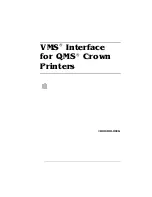
Chapter 2: AT-9400Ts Stacks
74
Section I: Basic Operations
Stack IP Address
If you do not intend to use the packet routing feature, you must still assign
one routing interface to the stack if it will be performing any of the following
management functions:
Remote Telnet or web browser management
Sending event messages to a syslog server
Sending or receiving TCP/IP pings
Uploading or downloading files to the master switch’s file system from
a TFTP server
To assign an IP address to the stack you have to create an IPv4 routing
interface. The stack uses the routing interface’s IP address as its address
when performing the functions listed above.
Here are the general steps to assigning an IP address to the stack:
1. Create a virtual LAN (VLAN) on the stack. The VLAN must include the
port(s) from where the stack will communicate with the remote servers
or the Telnet or web browser clients. You can skip this step if you will
be using the Default_VLAN for the remote management sessions.
2. Add an IPv4 routing interface to the VLAN. If the IP addresses of the
routing interface and the remote servers or Telnet clients are part of
different subnets, the subnets must be connected with Layer 3 routing
devices.
3. To manage the stack from a remote Telnet client, designate the
routing interface as the stack’s local interface with SET IP LOCAL
INTERFACE command. This instructs the management software to
monitor the subnet of the interface for the remote management
packets from the Telnet client.
Summary of Contents for AT-S63
Page 14: ...Figures 14 ...
Page 18: ...Tables 18 ...
Page 28: ...28 Section I Basic Operations ...
Page 58: ...Chapter 1 Overview 58 ...
Page 76: ...Chapter 2 AT 9400Ts Stacks 76 Section I Basic Operations ...
Page 96: ...Chapter 5 MAC Address Table 96 Section I Basic Operations ...
Page 114: ...Chapter 8 Port Mirror 114 Section I Basic Operations ...
Page 116: ...116 Section II Advanced Operations ...
Page 146: ...Chapter 12 Access Control Lists 146 Section II Advanced Operations ...
Page 176: ...Chapter 14 Quality of Service 176 Section II Advanced Operations ...
Page 196: ...196 Section III Snooping Protocols ...
Page 204: ...Chapter 18 Multicast Listener Discovery Snooping 204 Section III Snooping Protocols ...
Page 216: ...Chapter 20 Ethernet Protection Switching Ring Snooping 216 Section III Snooping Protocols ...
Page 218: ...218 Section IV SNMPv3 ...
Page 234: ...234 Section V Spanning Tree Protocols ...
Page 268: ...268 Section VI Virtual LANs ...
Page 306: ...Chapter 27 Protected Ports VLANs 306 Section VI Virtual LANs ...
Page 320: ...320 Section VII Internet Protocol Routing ...
Page 360: ...Chapter 30 BOOTP Relay Agent 360 Section VII Routing ...
Page 370: ...Chapter 31 Virtual Router Redundancy Protocol 370 Section VII Routing ...
Page 372: ...372 Section VIII Port Security ...
Page 402: ...Chapter 33 802 1x Port based Network Access Control 402 Section VIII Port Security ...
Page 404: ...404 Section IX Management Security ...
Page 436: ...Chapter 36 PKI Certificates and SSL 436 Section IX Management Security ...
Page 454: ...Chapter 38 TACACS and RADIUS Protocols 454 Section IX Management Security ...
Page 462: ...Chapter 39 Management Access Control List 462 Section IX Management Security ...
Page 532: ...Appendix D MIB Objects 532 ...
















































